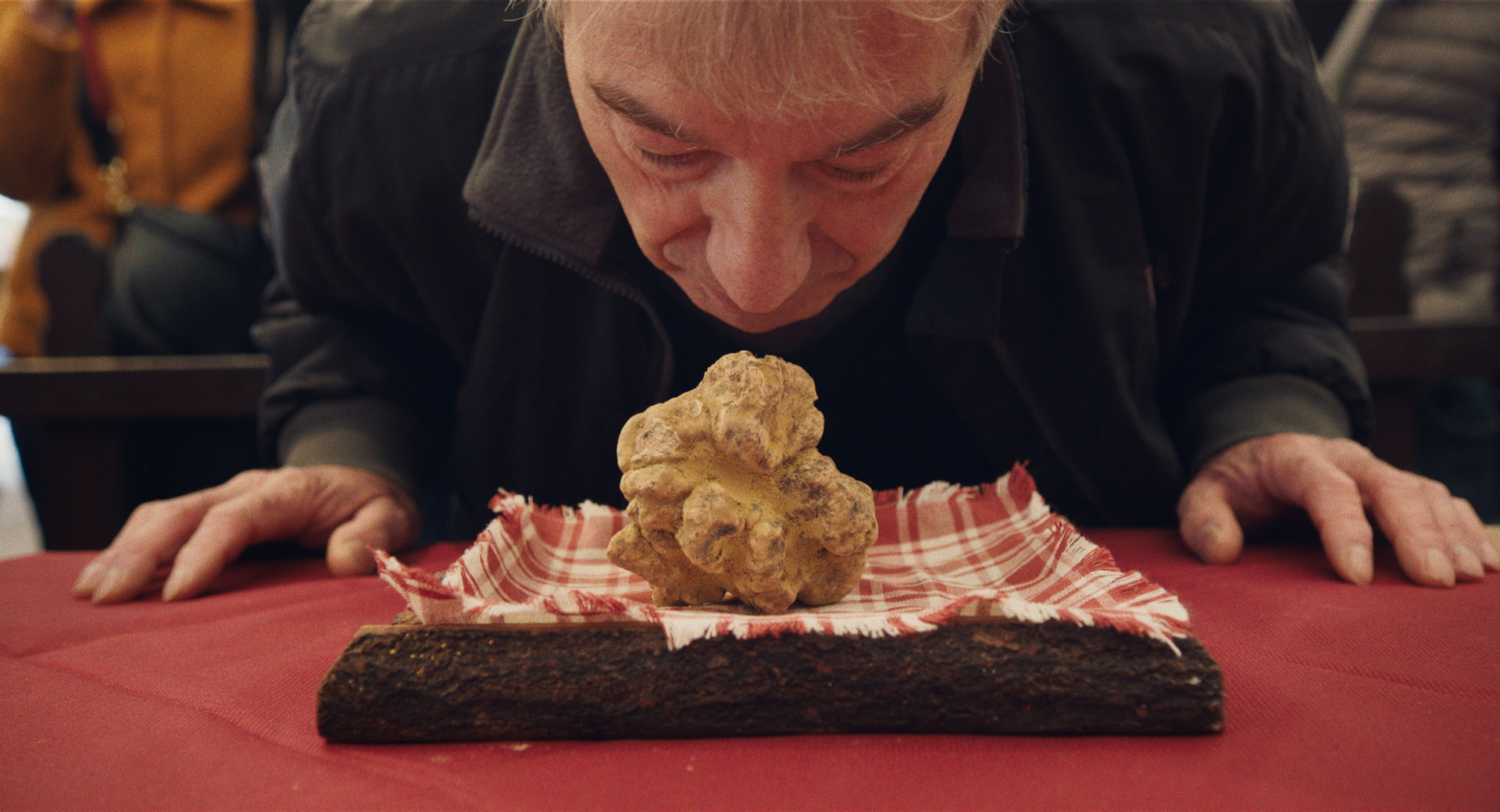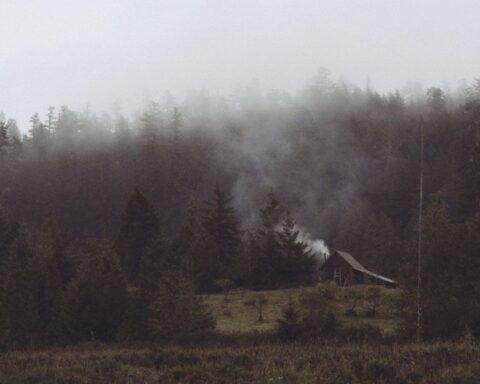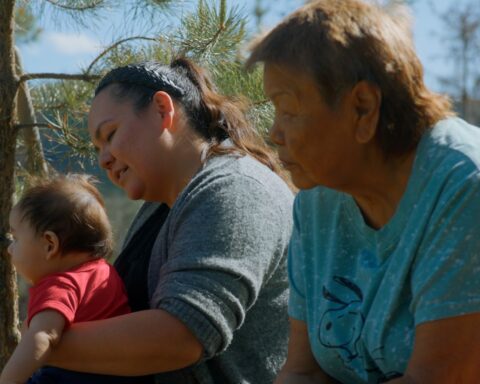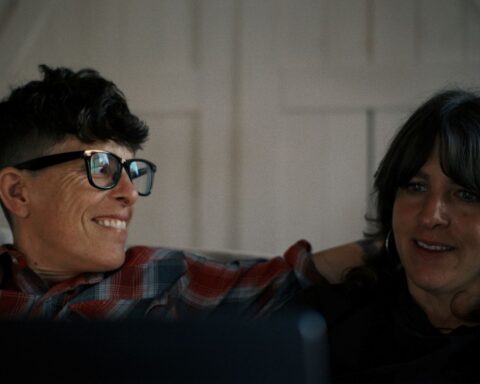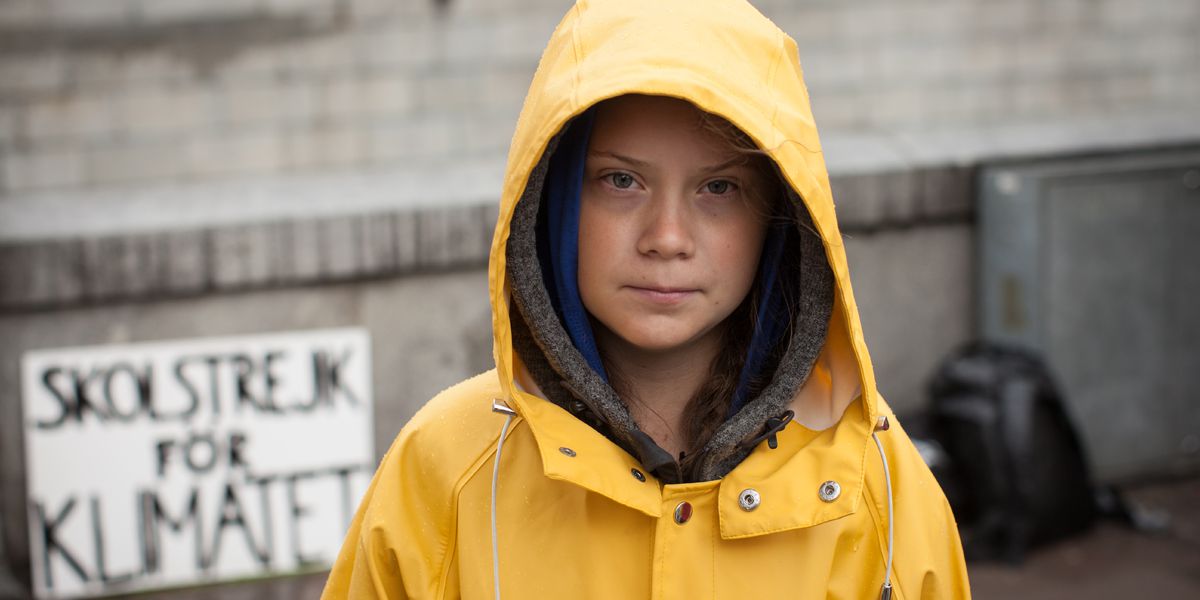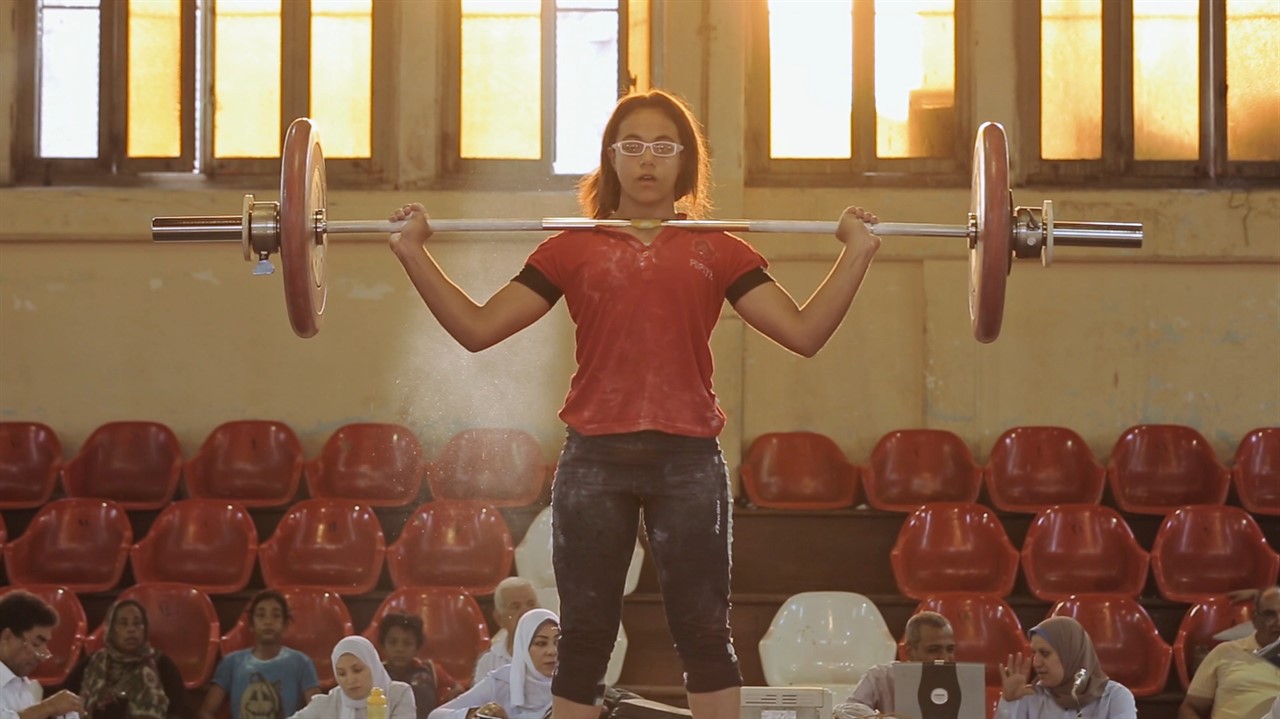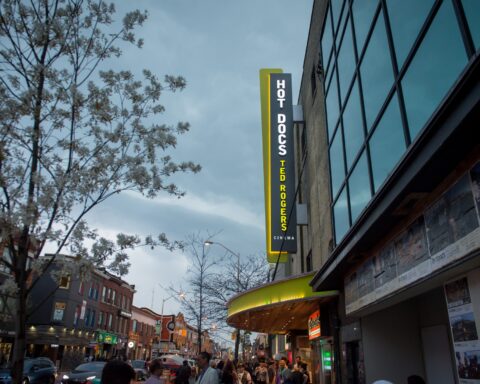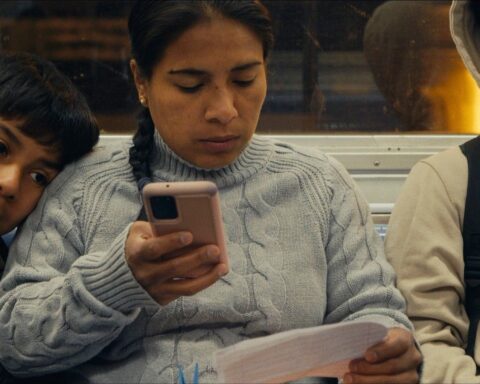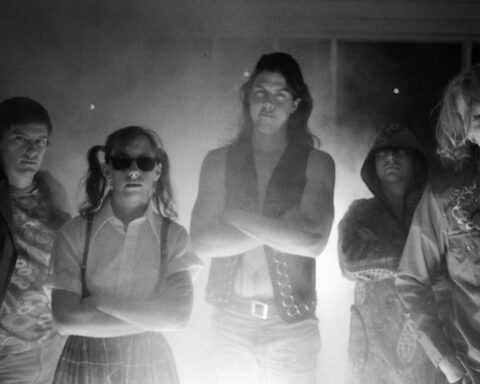There are few films more delicious than Michael Dweck and Gregory Kershaw’s The Truffle Hunters. A painterly and beautifully composed work, the documentary follows a group of old men and their dogs as they climb hills and dales. Using little more than walking sticks, strength that belies their years, decades of experience, and their canine’s finely tuned snouts, they seek out buried treasure. The result is a fairytale-like journey into a hidden world that feels completely out of time, a lifestyle peppered with quiet contemplation mixed with the exhilaration of the hunt and the indulgence in one of the most coveted and rare foods on the planet: the Alba white truffle.
POV spoke with directors Michael Dweck and Gregory Kershaw prior to the film’s Canadian premiere at the Toronto International Film Festival.
POV: Jason Gorber
MD: Michael Dweck
GK: Gregory Kershaw
This interview has been edited for brevity and clarity.
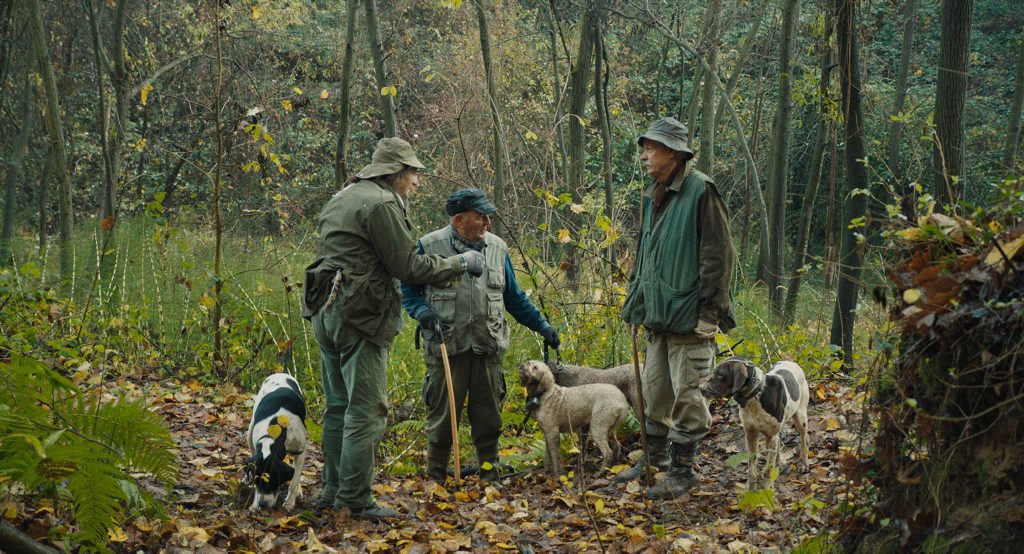
POV: I hate dogs, but I love this movie. It’s spectacular.
MD: That’s the headline! [Laughs]
POV: How did you find your characters?
MD: We found this place by accident. We had just finished editing The Last Race and were looking for a place to go with our families to disappear and relax. We both ended up by coincidence in this tiny little village called Montecalvo in the Piedmont Mountains of Italy. We were trying to find a place that had no tourists. In August, you go into the mountains when it’s really hot and everyone else is by the sea. Locals began to say we should be there in November for truffle season. They were pointing to the mountains and saying, “There are people out there, we don’t know who they are, but they are truffle hunters.” They have a little wooden box outside of a store, and you put 50 Euros inside of the box, come back in the morning, and there’s a truffle in there. Piedmont was a unique place in that it looked like time had stopped. Greg and I decided to come back and we spent two weeks trying to dig up a possible film. We thought it would take a month, but it actually took a year just to find who the real truffle hunters were.
POV: How does that process work? You’re not going to show them your reel. How does that conversation even initiate with a group of people who clearly are reticent to talk to one another about their secrets?
GK: That’s why it took a year to get into this world. At first, people connected us with well-known truffle hunters who go out with tourists. They’ll plant a truffle in the ground and a tourist will find it and they’ll have the truffle hunting experience. Everything in this world is secret: where they find the truffles, where they sell the truffles. Even the restaurant owners or buyers don’t want to share who the truffle hunters are. It was first about immersing ourselves in these communities and just spending time there by going to the restaurants, meeting the mayors, and the priests. They introduce you to somebody who knows a guy, and through that person you eventually find the real people. Even then, once we met them, that was just the first step. It then becomes about them understanding what we wanted to do. We didn’t start out with a story. We started out with this mystery that we needed to unravel: what is this world? What is this truffle trade? But when we spent time with these people, we understood the stories of their lives. Every human being has life and death decisions that they’re making and important stories that fill their days. That’s what we came to uncover.
MD: Also, nobody tells the truth. They don’t tell the truth to their wives, to their children, to their best friends. They never admit they found a truffle anywhere. We found two guys—I think they were both named Aldo. They were in their late eighties and we sat with them. We asked how long they had been friends, and they said 82 years and [that they] are both truffle hunters. They sit there and have coffee at the same time every morning after their truffle hunt. We asked if they ever tell each other the truth about their truffles. “Never!” they replied. [Laughs]
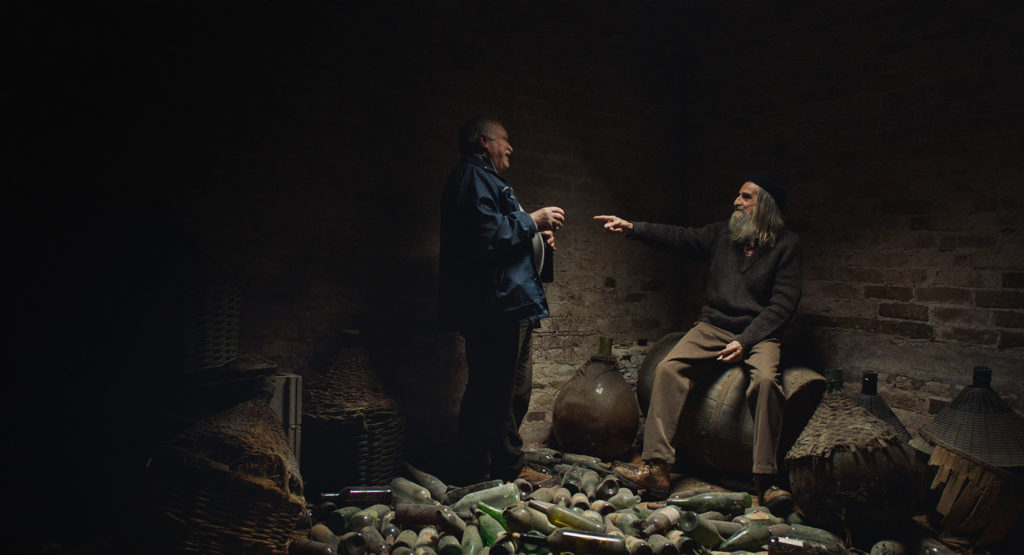
POV: There’s something mystical, or at least mediaeval, about their quest
GK: Some of the hunters work with water diviners. That was in the film at one point. They hire them to find electromagnetic fields within the ground. Truffles attach to the root of an oak tree and they believe that it gives off electromagnetic currents. Each one has their thing, and their thing is a secret.
POV: Compositionally, it is so exquisite that one would assume at times that it’s staged. Could you discuss how you got into the positions that you were in to capture what was taking place on screen?
GK: Most days, we would get one shot at the most. Some days, we would shoot nothing. The process of making the film was about observing their lives, understanding what was occurring, and then figuring out ways that we could unobtrusively capture what was happening. We would spend a lot of time thinking about the right place to put the camera to help the audience feel what was going on. We never wanted to shoot in direct sunlight, and we always wanted to make things beautiful. It was all about finding the timing to make that work, but then also doing it in a way where we could disappear. We would just set up the camera and let it run for two hours, changing the cards, and observing. The scenes in the film are usually just little slices of what was shot. They’re a minute long. But surrounding that are the two hours of footage that we filmed. Editing was an unusual challenge because of precisely the thing that you’re talking about. We couldn’t shape the scenes in the edit, as whatever happened, happened. We had to use that one minute of unbroken footage. If we didn’t, if something interesting didn’t happen, we didn’t have a scene and it was a day wasted.
POV: Are both of you behind the camera then? To pull this off, you’d surely have to have only a small group.
MD: It is a very intimate crew. Greg and I are both cinematographers. We have a translator who is live translating because they’re speaking dialect most of the time, and we have a sound person. The hunters got used to us. At first, they thought we were just coming back once, and they were glad to see us leave, because they’re farmers. They have work to do. We’d come back three weeks later, and then three weeks later, and three weeks later. It took three years to shoot. They got used to us and became like family to us. They never realized the camera was there. They didn’t care about it. They had stuff to do, they had dinner to make, they had the fields to plough. We were the smallest thing in their day.
POV: Are you holding Canon C-300s when you shoot? Are you shooting with drones? How does it all work?
MD: No drones. We shot with an ARRI mini. The opening shot that people think is a drone shot? That’s a guy climbing up a cliff that’s 2500 feet up—vertical—where the dogs are barely making it. We’re on the other side of that cliff—hanging on, by the way—with a giant Angénieux lens and a rig that probably weighed about 150 pounds!
GK: The biggest challenge was just keeping up with these guys. Carlo is 88 years old, and we would be following him through the woods huffing and puffing. When they’re truffle hunting, they’re just so driven. We captured the feeling that they experience through the dog cam, because that’s the intensity with which they move through the woods. They’re on a mission.
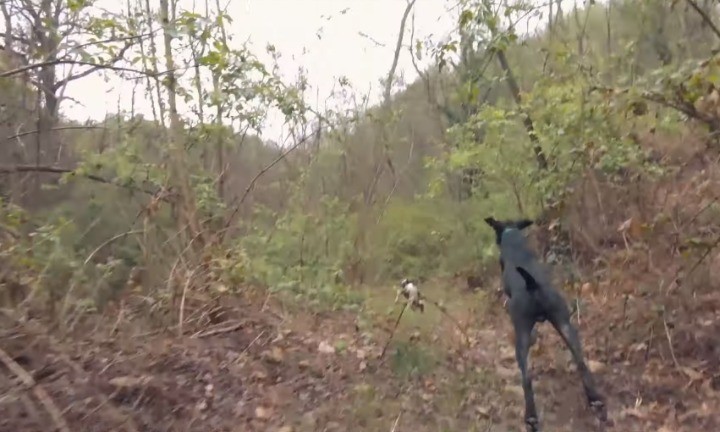
POV: You’re not the first to strap a GoPro on to a dog, but I think you’ve elevated that art.
MD: That’s actually a very sophisticated rig built by a local cobbler who lived below our apartment. We worked with a metal smith in town who made flexible piece of metal embedded in suede so it followed the curvature of the heads of the dogs. Every dog had a different snout, different head shape, different ears, so we had to keep developing.
POV: The dog-cam gives the perspective of the frenetic nature of it all, but also the weirdly archaic way that they dig to find these things. After all, it’s easier to make diamonds than it is to grow truffles.
GK: White truffles, unlike the black ones, cannot be cultivated. They only grow on a very little sliver of land in this one region of Italy where the ground is composed mostly of clay. To grow, truffles need to have perfect conditions. It requires a certain amount of fog, a certain amount of rain. Then it has to get really cold for two days, and the phase of the moon has to happen, then two days after—boom!—you get a truffle. It’s really complicated. Deforestation is a big problem in that region, because trees don’t make money; grapes do. That region’s becoming cleared land for grapes because now it’s getting warmer there. There’s a trust in Italy where we’ve taken money from the film and they’re buying forested land so it will be totally protected.
POV: How endangered is this activity? I don’t just mean in terms of the environment. Everybody you’re shooting is in their 70s or 80s. Is this still an old man’s game, or is it being taken over by young hunters using GPS?
GK: There is a younger generation doing it, but as you said, they’re not doing it in the same way. That’s why we felt it was so important to capture this now. It makes such a difference to go out in the woods with somebody who doesn’t have an iPhone and isn’t taking pictures. These men experience nature in a different way, and they experience community in a different way. They know everybody, they talk to everybody, they have relationships that are a lot different from those that most people in the modern world have. They don’t happen in a virtual space. They happen in the town square, at the trattoria, while getting an espresso, or visiting the butcher. There is another generation and some of them are cutting corners. One of the biggest problems is they’ll dig up truffles before they’re fully ripe, before they’ve had a chance to spread their spores. That’s one of the many problems that’s making truffles more and more scarce.
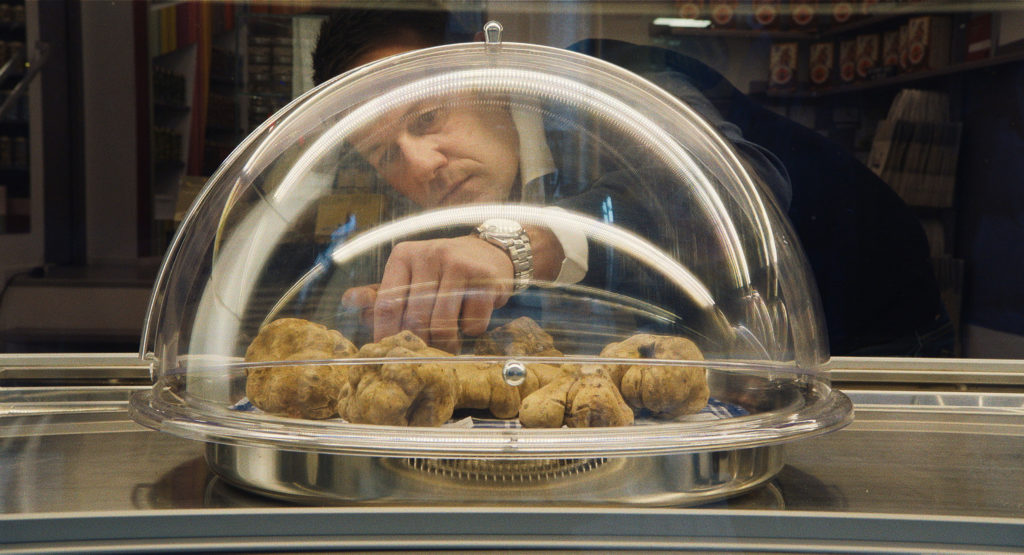
POV: Scarcity is driving demand, which excites even more people to look for truffles.
MD: The truffle that you see in the auction sold for $110,000.
POV: Could you talk about the use of sound to make us feel part of the environment?
MD: We spent a lot of time recording, and the sounds are quite unique. We wanted to bring the audience into this subjective experience of the truffle hunters and the dogs. The dogs have microphones attached to the nose, little tiny ones that we had on the top, the bottom and by their paws. You hear their footsteps. You’ll hear a leaf drop. You’ll hear different birds fly by. Forests have different types of wind characteristics. We have 4200 pieces of sound that we recorded. That was half the film—the experience of the soundscape.
POV: Were there specific films or other artworks that you referenced during the process?
GK: We started with an idea of the ecstasy of the hunt. As we started filming, the environment dictated a storybook fairytale narrative. We talked about the great Italian painters such as Caravaggio.
MD: A lot of times, when we walked into an environment, it seemed like a Titian painting. We looked a lot at the master Italian painters for reference, mostly for light. We would walk into someone’s home and it seemed like it was an art-directed set.
POV: If there was ever a film that we would wish for smell-o-vision, this is it.
MD: Well, at Sundance, we did hand out truffle popcorn!
GK: A lot of what we talked about is how to really bring the audience into this world. We tried to find a cinematic language that might give you some insight into all of the other senses. There’s a smell of food being cooked over a wood-burning stove, there’s the feeling of the marble tiles that you’re walking on, and the sensation of a world that cinema can’t touch but can get at indirectly. A lot of the conversation was about we can bring somebody truly into this place. It’s magic.
POV: In physics, there’s the notion that looking at something changes the very thing that you’re viewing. Do you worry that the success of your film will actually precipitate the downfall of this way of life by bringing their secrets to the world?
GK: My simple answer is that even we didn’t know where we were!
MD: With the spots they took us to, there is no way they will become touristy. The first time we went down the cliff we thought we were going to die. There is no way that anybody can find it, and we don’t even reveal where we shot. We realize that the tourist trade will go on with the tourist hunters that we first came across, but with our subjects, I think their secrets will be preserved.
The Truffle Hunters screened at TIFF 2020
Visit the POV TIFF Hub for more coverage from this year’s festival.
Update: The Truffle Hunters streams via Hot Docs Ted Rogers Cinema beginning August 19.




